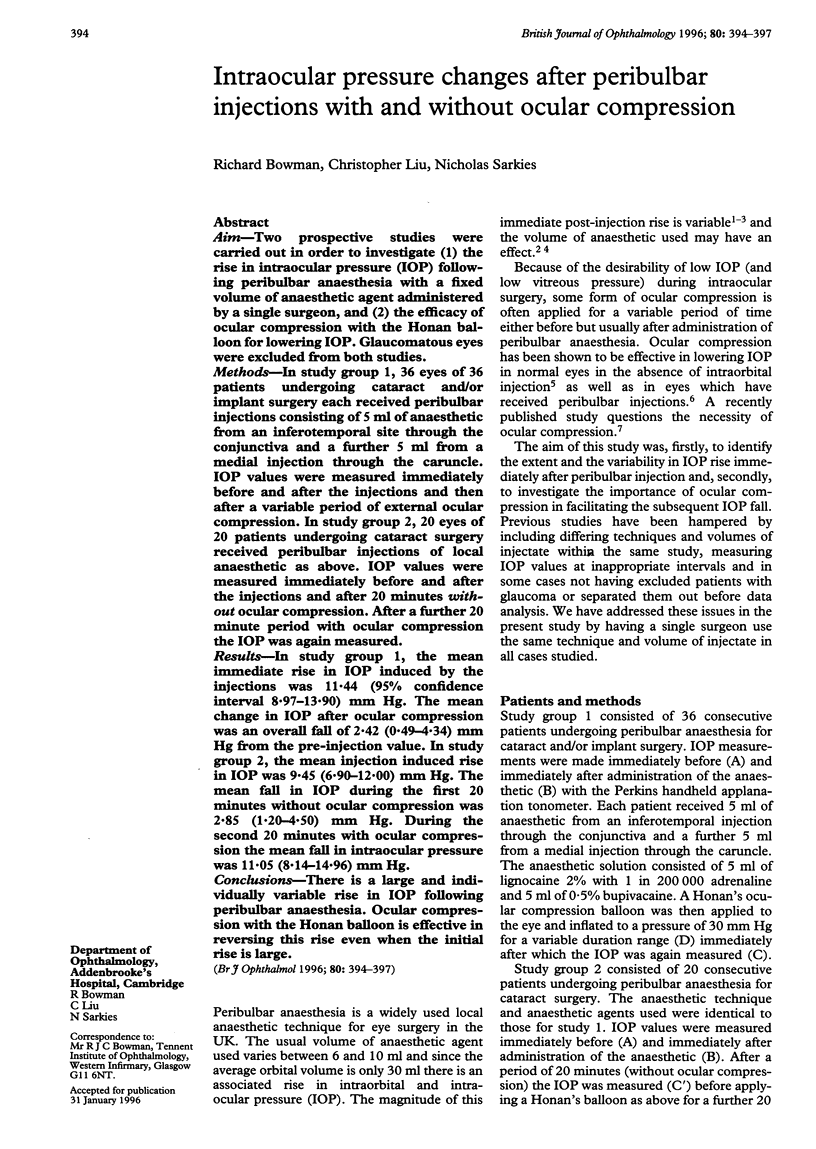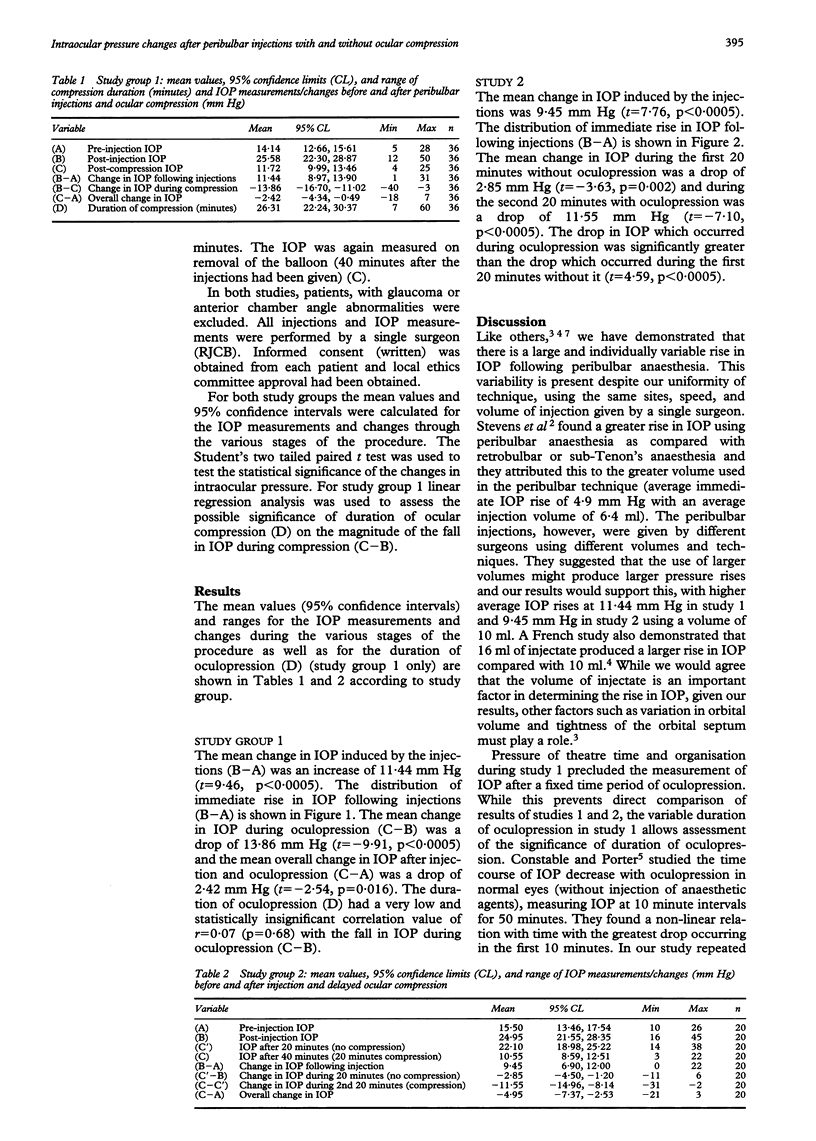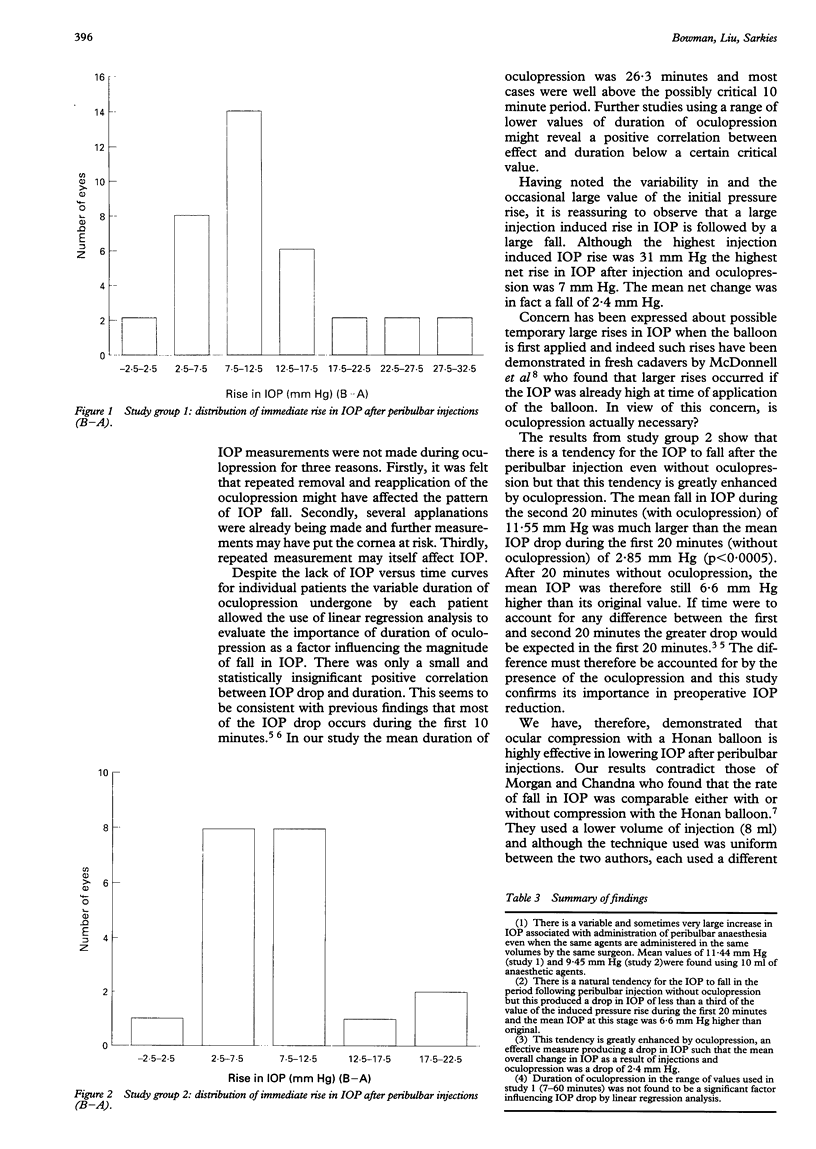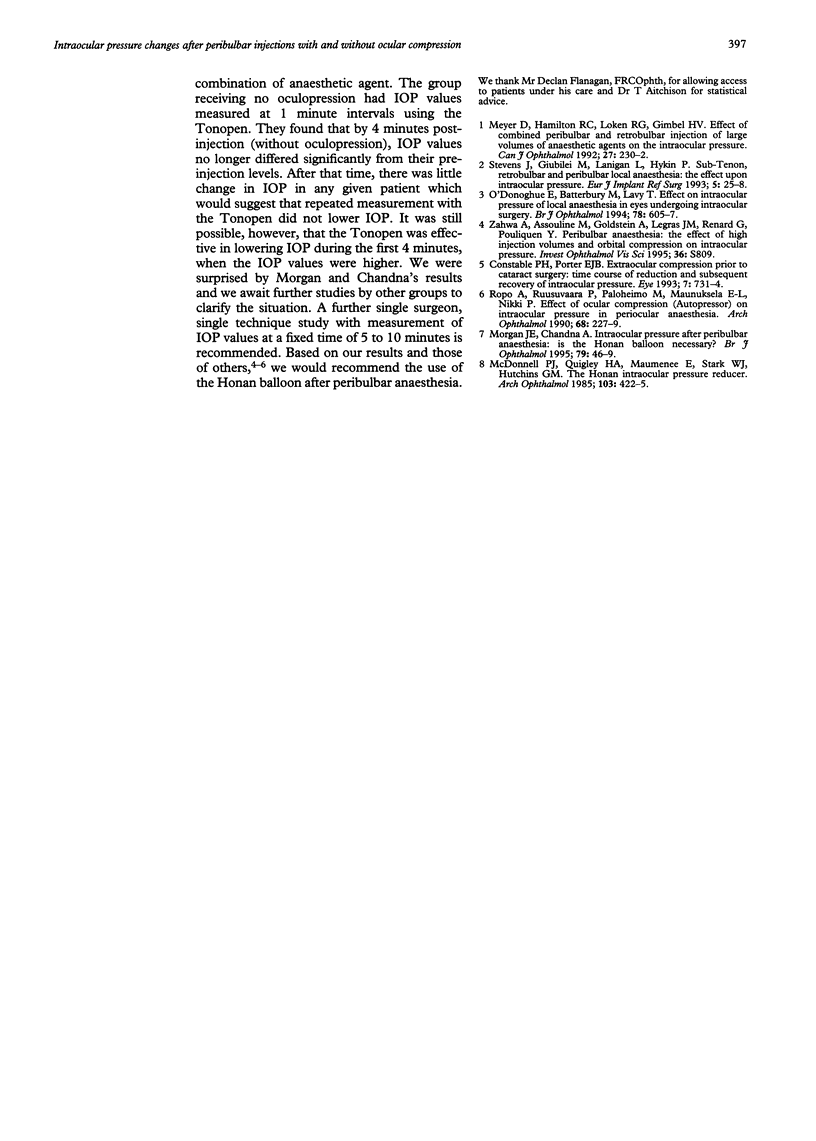Abstract
AIM: Two prospective studies were carried out in order to investigate (1) the rise in intraocular pressure (IOP) following peribulbar anaesthesia with a fixed volume of anaesthetic agent administered by a single surgeon, and (2) the efficacy of ocular compression with the Honan balloon for lowering IOP. Glaucomatous eyes were excluded from both studies. METHODS: In study group 1, 36 eyes of 36 patients undergoing cataract and/or implant surgery each received peribulbar injections consisting of 5 ml of anaesthetic from an inferotemporal site through the conjunctiva and a further 5 ml from a medial injection through the caruncle. IOP values were measured immediately before and after the injections and then after a variable period of external ocular compression. In study group 2, 20 eyes of 20 patients undergoing cataract surgery received peribulbar injections of local anaesthetic as above. IOP values were measured immediately before and after the injections and after 20 minutes without ocular compression. After a further 20 minute period with ocular compression the IOP was again measured. RESULTS: In study group 1, the mean immediate rise in IOP induced by the injections was 11.44 (95% confidence interval 8.97-13.90) mm Hg. The mean change in IOP after ocular compression was an overall fall of 2.42 (0.49-4.34) mm Hg from the pre-injection value. In study group 2, the mean injection induced rise in IOP was 9.45 (6.90-12.00) mm Hg. The mean fall in IOP during the first 20 minutes without ocular compression was 2.85 (1.20-4.50) mm Hg. During the second 20 minutes with ocular compression the mean fall in intraocular pressure was 11.05 (8.14-14.96) mm Hg. CONCLUSIONS: There is a large and individually variable rise in IOP following peribulbar anaesthesia. Ocular compression with the Honan balloon is effective in reversing this rise even when the initial rise is large.
Full text
PDF



Images in this article
Selected References
These references are in PubMed. This may not be the complete list of references from this article.
- Constable P. H., Porter E. J. Extraocular compression prior to cataract surgery: time course of reduction and subsequent recovery of intraocular pressure. Eye (Lond) 1993;7(Pt 6):731–734. doi: 10.1038/eye.1993.170. [DOI] [PubMed] [Google Scholar]
- McDonnell P. J., Quigley H. A., Maumenee A. E., Stark W. J., Hutchins G. M. The Honan intraocular pressure reducer. An experimental study. Arch Ophthalmol. 1985 Mar;103(3):422–425. doi: 10.1001/archopht.1985.01050030118035. [DOI] [PubMed] [Google Scholar]
- Meyer D., Hamilton R. C., Loken R. G., Gimbel H. V. Effect of combined peribulbar and retrobulbar injection of large volumes of anesthetic agents on the intraocular pressure. Can J Ophthalmol. 1992 Aug;27(5):230–232. [PubMed] [Google Scholar]
- Morgan J. E., Chandna A. Intraocular pressure after peribulbar anaesthesia: is the Honan balloon necessary? Br J Ophthalmol. 1995 Jan;79(1):46–49. doi: 10.1136/bjo.79.1.46. [DOI] [PMC free article] [PubMed] [Google Scholar]
- O'Donoghue E., Batterbury M., Lavy T. Effect on intraocular pressure of local anaesthesia in eyes undergoing intraocular surgery. Br J Ophthalmol. 1994 Aug;78(8):605–607. doi: 10.1136/bjo.78.8.605. [DOI] [PMC free article] [PubMed] [Google Scholar]
- Ropo A., Ruusuvaara P., Paloheimo M., Maunuksela E. L., Nikki P. Effect of ocular compression (Autopressor) on intraocular pressure in periocular anaesthesia. Acta Ophthalmol (Copenh) 1990 Apr;68(2):227–229. doi: 10.1111/j.1755-3768.1990.tb01911.x. [DOI] [PubMed] [Google Scholar]




